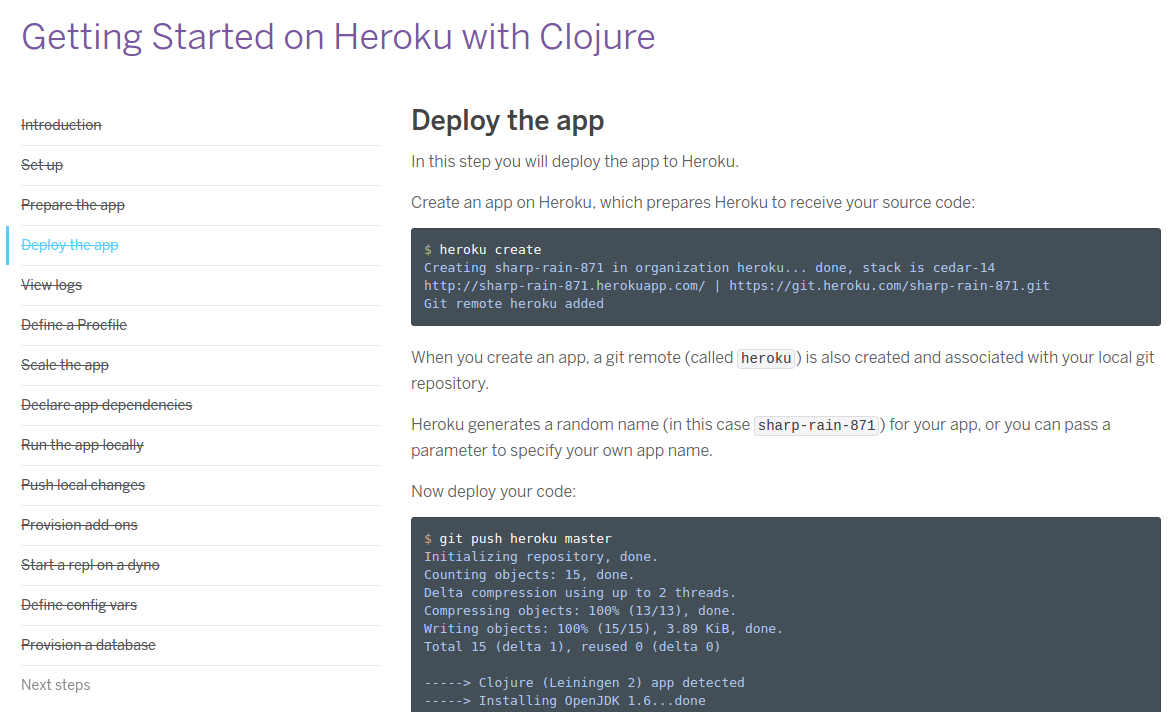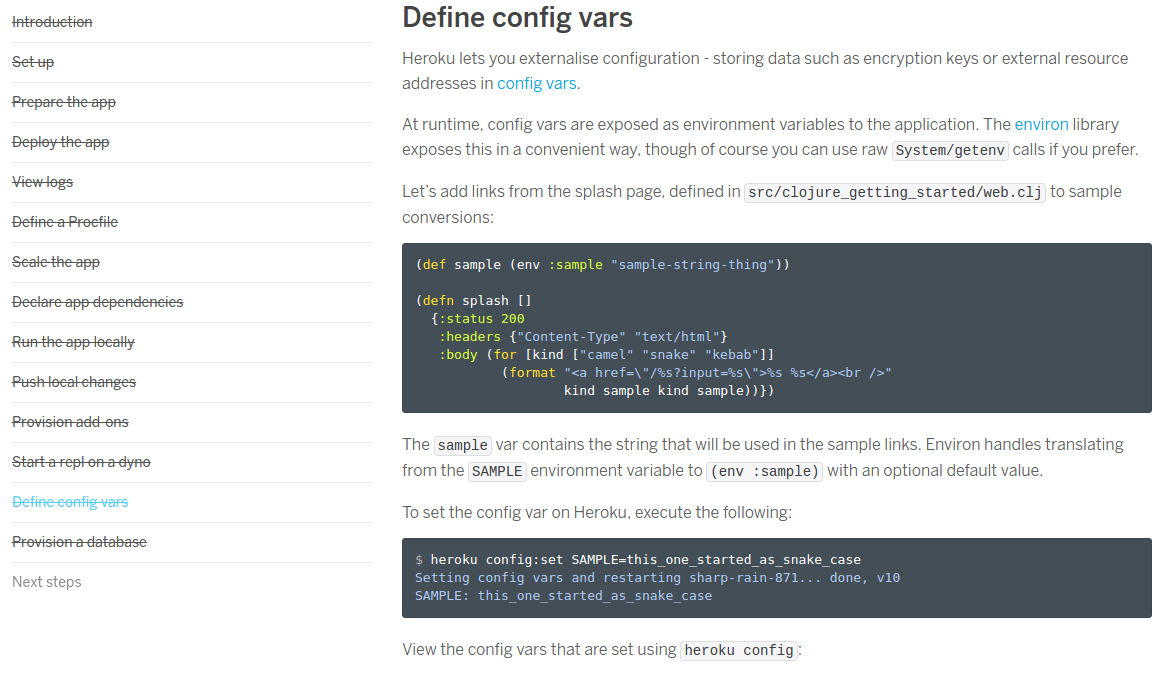August 2, 2016
A Facebook messenger bot in Clojure on Heroku -Part I
Here's a howto guide on creating and running a bot on the Facebook messenger platform using Clojure on the Heroku PaaS platform. Part inspired from this post by Abhay.
The messenger platform requires the use of a HTTPS URL, and the URL needs to be available and accessible to test against. I found that using Heroku solves multiple goals, no need to expose the URL via ngrok+localhost, nor is getting a SSL certicate required since Heroku dynos are available on an HTTPS URI.
Steps:
Create a Heroku free tier account
- Heroku has a free dyno tier of that allows running an application for 550 hours.
- We need to get a Heroku account and download the Heroku command line toolbelt.

Create a Facebook App and page
I found the terminology a bit confusing at first.
- The FB App(lication) is what hosts the chatbot within the Facebook platform. The primary task of the App is to provide a chat-like user interface.
- A Webhook (as named by Facebook) is the chat service hosted on an external web service. When a user types a message, the Facebook App "forwards" the message to the web service URI (via an HTTPS POST message with a particular format). The web service can respond to a message by POSTing back to a Facebook URI.
- The chat web service is a REST-style web service that reads and writes JSON encoded data.
- Additionally, for the FB App to be "discovered", it needs to be associated with a Facebook page. It appears that a user or a page on Facebook is the primary 'actor' with which other human actors interact. When a user navigates to a page on Facebook and clicks on "Message", Facebook forwards the messages to the App (which has been associated with that page).
Create a Page and verify token
- There are 2 kinds of tokens required:
- A verify token is what FB uses to verify that the webhook is valid and authenticated
- A page token is used to authenticate the connection between the App and the Page.
- Note that the page tokens are not displayed on Facebook, if you haven't had it stored, you might need to regenerate a new token
Clone the repo and deploy it
- The repo is available at Github
- Run
lein testto verify that tests pass - Deploy the App from instructions at the link below.
Config vars
- The page token and verify token are included in the HTTP responses and need to be accessed by Clojure Application.
- The Environ library is used to load these tokens. Typically, Environ loads this from a .lein-env file.
- Since Heroku bundles the jar as an uberjar, the tokens need to be packaged into this uberjar to be accessible on the Heroku dyno.
- A cleaner way to set the token's values is to use Heroku's config, which can be set from the command line.
Testing the App is described in Part II


